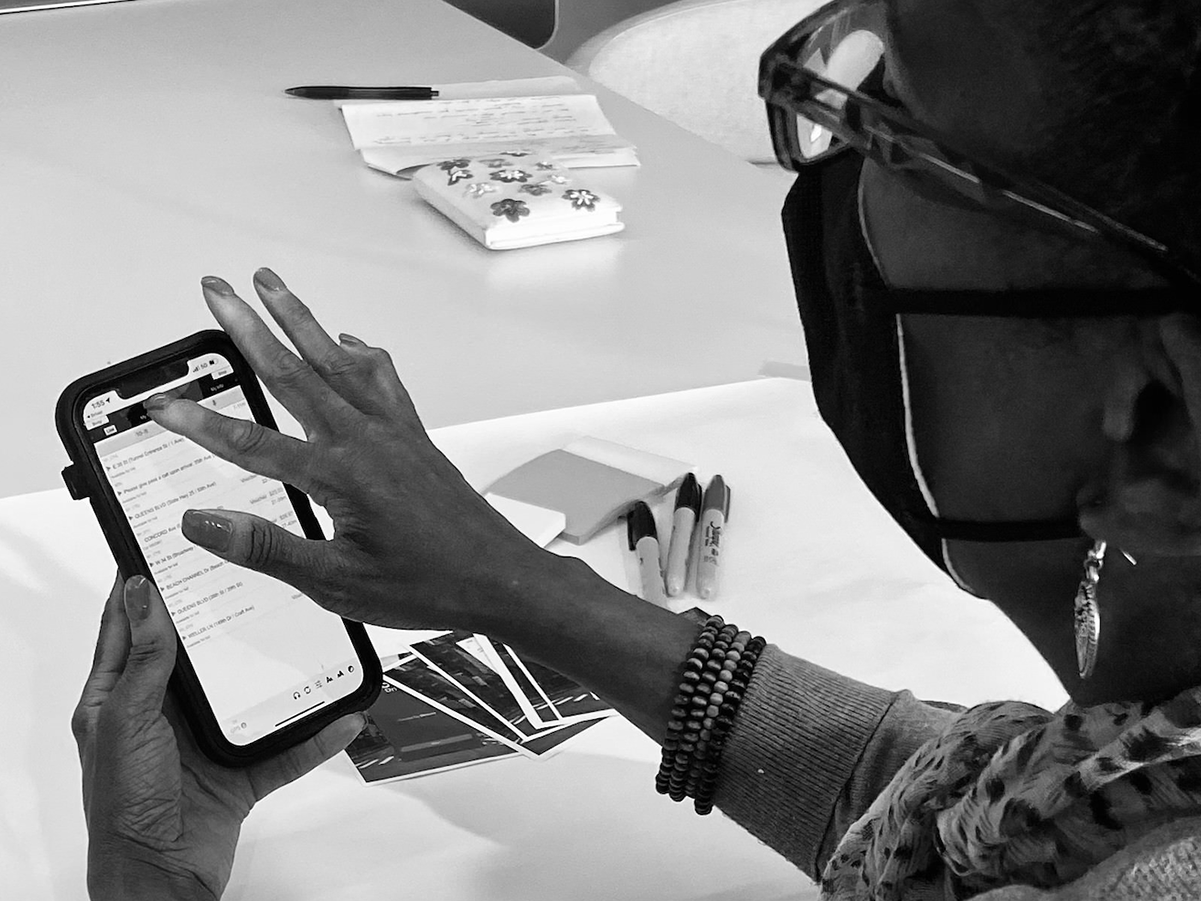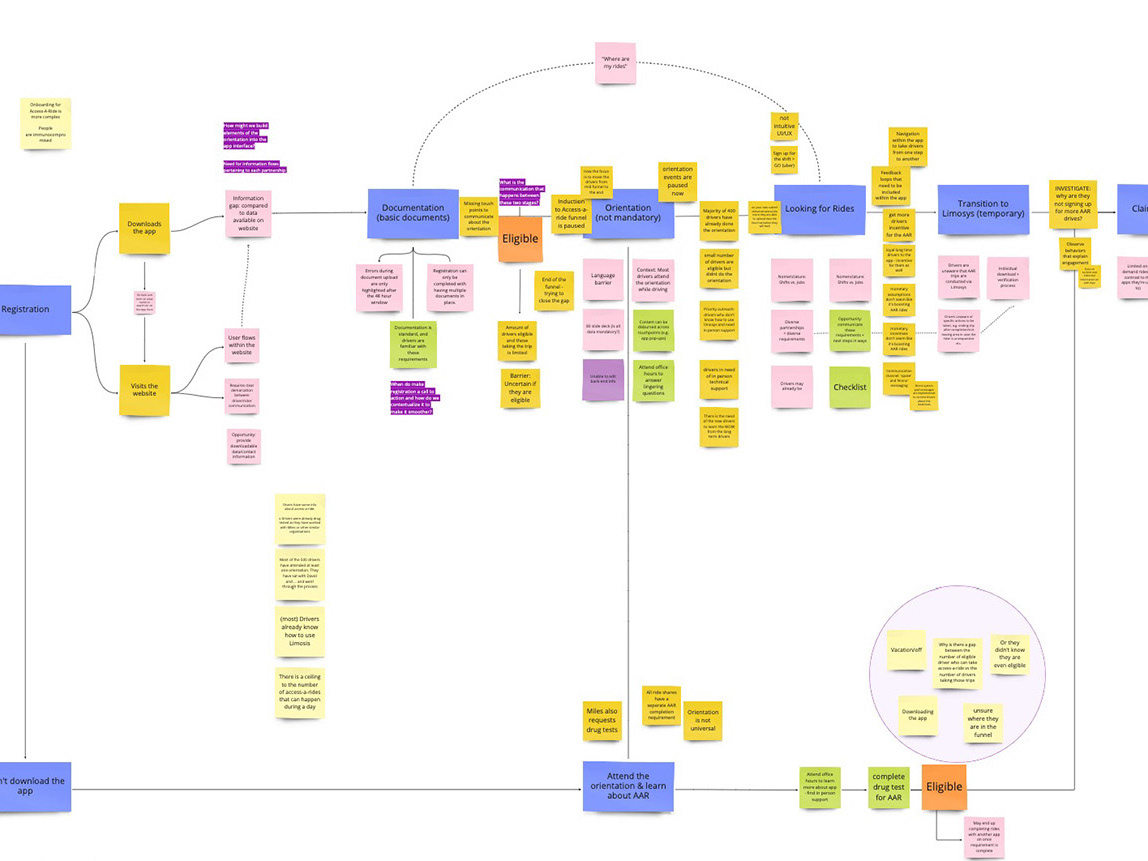Case Study 1: Libraries as Vehicles for Justice
Partner Organization: Brooklyn Public Library
Brooklyn Public Library (Bedford branch) sought
to reimagine its role for people returning from
incarceration. We framed the library not just as a
storefront for services but as a social and civic hub
that could bridge gaps in reentry support.
Using in-depth interviews, video ethnography,
and co-design workshops with returning citizens,
librarians, and local nonprofits, we surfaced deep
themes of isolation, mistrust, and unmet needs
across food, housing, clothing, and social services
the moment individuals stepped outside the library
doors. By mapping over a dozen community
organizations already supporting reentry, we
identified critical service gaps and conceived the
“Reentry Coach” a dedicated library liaison who
personally guides each individual through the
ecosystem of care, embedding trust, continuity, and
civic engagement into every handoff. BPL leadership
responded enthusiastically, committing to pilot
the Coach role, formalize partnerships with three
nonprofits, and integrate the Coach toolkit into staff
workflows—turning a one-off research insight into a
scalable, human-centered strategy for healing and
collaboration.
Case Study 2: Future-Ready USPS: Systems Design Strategy
Partner Organization: U.S. Postal Service
We partnered directly with the U.S. Postal Service to reframe its
existing mail-and-parcel network as a strategic civic infrastructure.
Over a week of fieldwork we visited sorting facilities, accompanied
carriers, and organised workshops with frontline employees and
community stakeholders. We then mapped USPS’s service gaps, pain
points, and the social value embedded in every delivery. Our goal was
to identify high-impact interventions that honor USPS’s legacy while
unlocking new revenue streams and equity-focused services.
Key Systems-Design Insights:
1. Automation Trade-Offs
Risks: Large-scale role displacement in sorting and delivery; erosion of
institutional trust if automation proceeds without human-centered
redeployment.
Opportunities: Lower operational costs and reinvestment potential;
reskilling pathways for existing workforce.
2. New Value Streams
Postal Banking: In ZIP codes where 59% of residents lack a bank
branch, converted post offices could offer basic financial services such
as savings accounts, small business loans, and digital financial literacy
workshops.
Secure Voting Infrastructure: Building on USPS’s 46% share of mailed
ballots in 2020, we propose a blockchain-enabled ballot mailer pilot,
ensuring tamper-proof, trackable elections.
Community Hubs: Transform underutilised delivery unit sorters into
co-working spaces, maker labs, and job-training centers, leveraging
USPS’s physical footprint to foster social entrepreneurship.
Strategic Roadmap & Next Steps
Anchored by USPS’s mission “to bind the nation together,” our Solidarity Toolkit pairs concise design briefs with prototype plans and policy recommendations. By reinvesting efficiency gains from automation into these civic-service innovations, USPS can secure its financial future, deepen community trust, and expand its role as an indispensable public commons. The next phase is a staged pilot rollout, beginning with postal banking kiosks and secure ballot mailers in select regions followed by workforce upskilling and impact evaluation.









